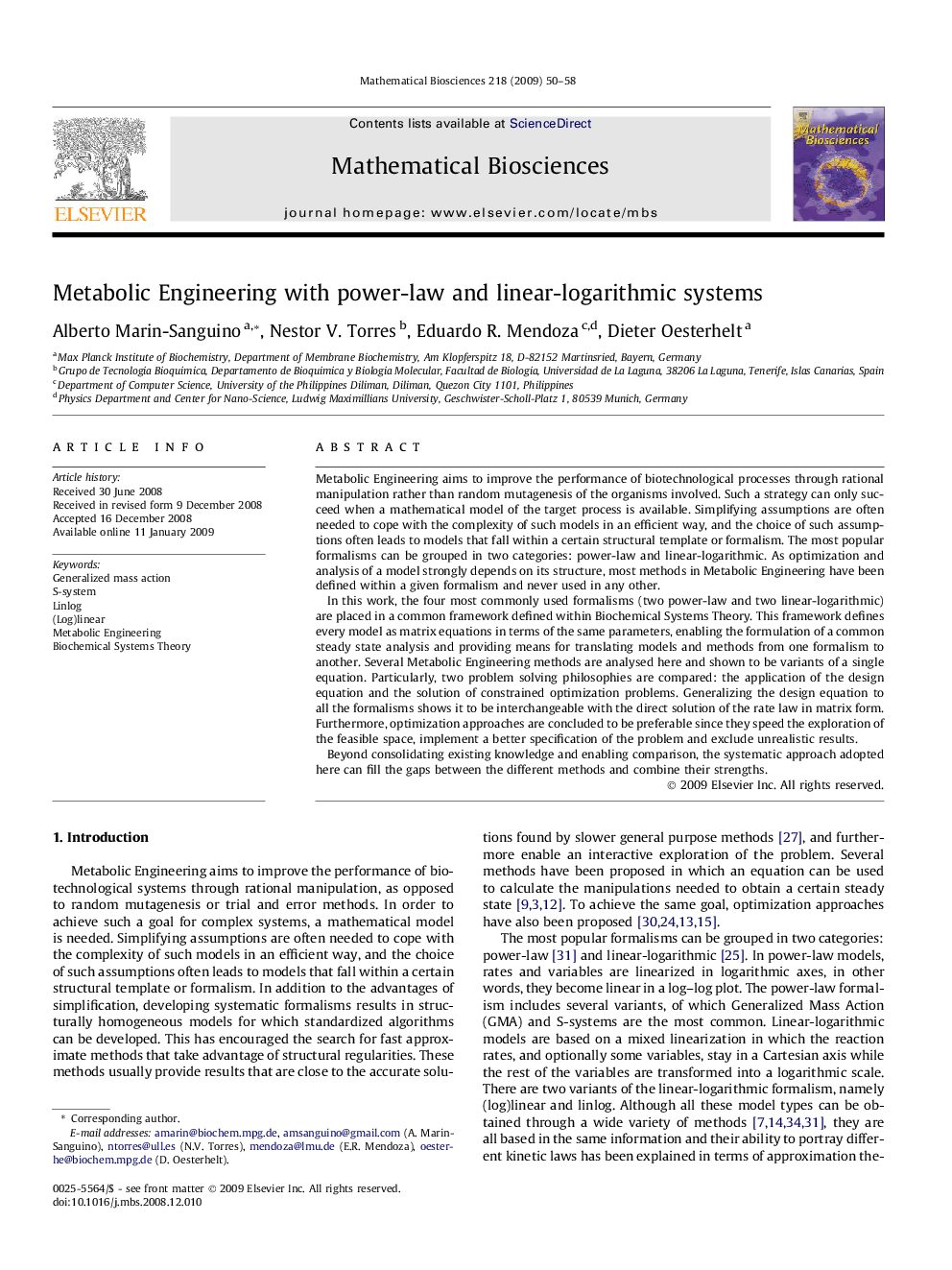| کد مقاله | کد نشریه | سال انتشار | مقاله انگلیسی | نسخه تمام متن |
|---|---|---|---|---|
| 4500724 | 1320018 | 2009 | 9 صفحه PDF | دانلود رایگان |

Metabolic Engineering aims to improve the performance of biotechnological processes through rational manipulation rather than random mutagenesis of the organisms involved. Such a strategy can only succeed when a mathematical model of the target process is available. Simplifying assumptions are often needed to cope with the complexity of such models in an efficient way, and the choice of such assumptions often leads to models that fall within a certain structural template or formalism. The most popular formalisms can be grouped in two categories: power-law and linear-logarithmic. As optimization and analysis of a model strongly depends on its structure, most methods in Metabolic Engineering have been defined within a given formalism and never used in any other.In this work, the four most commonly used formalisms (two power-law and two linear-logarithmic) are placed in a common framework defined within Biochemical Systems Theory. This framework defines every model as matrix equations in terms of the same parameters, enabling the formulation of a common steady state analysis and providing means for translating models and methods from one formalism to another. Several Metabolic Engineering methods are analysed here and shown to be variants of a single equation. Particularly, two problem solving philosophies are compared: the application of the design equation and the solution of constrained optimization problems. Generalizing the design equation to all the formalisms shows it to be interchangeable with the direct solution of the rate law in matrix form. Furthermore, optimization approaches are concluded to be preferable since they speed the exploration of the feasible space, implement a better specification of the problem and exclude unrealistic results.Beyond consolidating existing knowledge and enabling comparison, the systematic approach adopted here can fill the gaps between the different methods and combine their strengths.
Journal: Mathematical Biosciences - Volume 218, Issue 1, March 2009, Pages 50–58